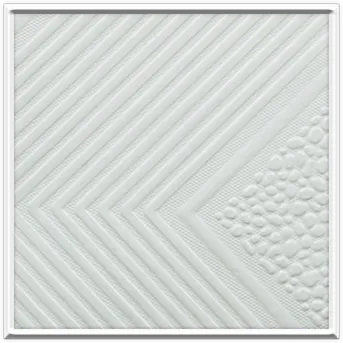Dec . 14, 2024 12:08 Back to list
Installation Guide for Cross Tees in Suspended Ceiling Systems
Understanding Cross Tees in Suspended Ceilings
Suspended ceilings, also known as drop ceilings or false ceilings, are an essential component in many commercial and residential spaces. They not only enhance aesthetic appeal but also serve practical purposes such as concealing wiring, plumbing, and HVAC systems. Among the various elements that make up suspended ceilings, cross tees play a vital role in their structural integrity and functionality. This article delves into the significance of cross tees in suspended ceilings and how they contribute to the overall design and performance of the ceiling system.
What are Cross Tees?
Cross tees are horizontal support members that are used within the grid system of suspended ceilings. They connect with main tees, which are the primary runners that support the weight of the ceiling tiles. Typically made of metal, cross tees are available in various lengths, allowing for flexibility in design and installation. When installed, cross tees help create a grid layout that can accommodate standard ceiling tiles, traditionally sized at 2x2 or 2x4 feet.
Functionality of Cross Tees
1. Support and Stability One of the primary functions of cross tees is to provide structural support to the suspended ceiling. They help distribute the weight of the ceiling tiles evenly across the grid, ensuring the system remains stable and secure. This is particularly important in commercial applications where larger tiles and heavier materials might be used.
cross tees suspended ceiling

2. Design Flexibility Cross tees allow for significant design versatility. By varying the spacing and arrangement of the main tees and cross tees, architects and designers can create unique ceiling patterns and configurations. This can enhance the visual appeal of spaces while also serving practical needs such as balancing acoustics and lighting.
3. Easy Installation The installation of suspended ceilings is relatively straightforward, thanks in large part to the use of cross tees. Their design allows for quick and efficient fitting of ceiling tiles into the grid system. This not only speeds up the installation process but also makes it easier to remove and replace tiles when necessary, facilitating maintenance and repairs.
4. Acoustic Properties Many suspended ceilings are designed with acoustic performance in mind. Cross tees can be installed with specific spacing to enhance sound absorption and minimize noise, which is crucial in environments like schools, offices, and restaurants. The grid system can also accommodate acoustic tiles that further improve sound quality within a space.
5. Concealment of Utilities One of the most practical benefits of suspended ceilings, supported by cross tees, is the ability to conceal various utilities, such as electrical wires, ductwork, and plumbing. This not only helps maintain a clean and organized appearance but also provides easy access for repairs and upgrades without disrupting the aesthetics of the space.
Conclusion
In summary, cross tees are an integral component of suspended ceilings, providing structural support, design flexibility, ease of installation, acoustic benefits, and utility concealment. Whether in commercial or residential applications, these components enhance the efficiency and aesthetics of ceiling systems. As modern design emphasizes both form and function, the role of cross tees will undoubtedly remain significant in the future of architectural spaces. Understanding their importance allows builders and designers to make informed decisions about ceiling construction, ultimately leading to enhanced environments that are both beautiful and practical.
-
Durable Ceiling T Grid Systems | Easy InstallationNewsAug.29,2025
-
PVC Gypsum Ceiling: Durable, Laminated Tiles for Modern SpacesNewsAug.28,2025
-
Pvc Gypsum Ceiling Is DurableNewsAug.21,2025
-
Mineral Fiber Board Is DurableNewsAug.21,2025
-
Ceiling Tile Clip Reusable DesignNewsAug.21,2025
-
Ceiling T Grid Modular DesignNewsAug.21,2025







